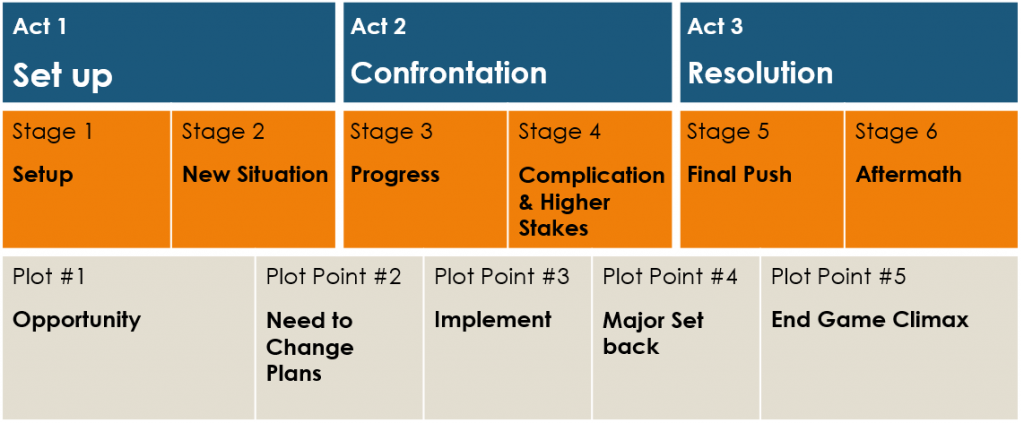We all like stories. We watch movies about them and when we come to driving a business case, stories are helpful in connecting to the board about the how and why. So when you think about the story of how we came up with the latest Product Roadmap, or why we need the new release, or moving to new markets, it’s worth referring back to the 7 basic plots below, to shape our story.
And as you shape that story consider four step summary, from Neil Rackham’s Spin Selling:
- [S] What was the situation?
- [P] What was the problem that needed solving?
- [I] What were the implications of not solving it?
- [N] What do/did we need to resolve the problem?
Now make sure those messages come through.
The Seven Basic Plots:
| Overcoming the Monster | Like Beowulf, ‘Little Red Riding Hood’, Jaws, and many of the James Bond films, where a hero must defeat a monster and restore order to a world that has been threatened by the monster’s presence.
|
| Rags to Riches | These stories feature modest, generally virtuous but downtrodden characters, who achieve a happy ending when their special talents or true beauty is revealed to the world at large. Includes any number of classics such as ‘Cinderella’,or David Copperfield.
|
| The Quest | A hero, often accompanied by sidekicks, travels in search of a priceless treasure and fights against evil and overpowering odds, and ends when he gets both the treasure and the girl. The Odyssey is a classic example of this kind of story.
|
| Voyage and Return | Alice in Wonderland, Robinson Crusoe on his desert island, other stories of normal protagonists who are suddenly thrust into strange and alien worlds and must make their way back to normal life once more.
|
| Comedy | Not always synonymous with humour. Instead, the plot of a comedy involves some kind of confusion that must be resolved before the hero and heroine can be united in love. Think of Shakespeare’s comedies, The Marriage of Figaro, the plays of Oscar Wilde and Gilbert and Sullivan, and even War and Peace. |
| Tragedy | As a rule, the terrible consequences of human overreaching and egotism. The Picture of Dorian Gray, Julius Caesar, Anna Karenina…this category is usually self-evident.
|
| Rebirth | The stories of Ebeneezer Scrooge and Mary Lennox would fall into this basic plot type, which focuses on a threatening shadow that seems nearly victorious until a sequence of fortuitous (or even miraculous) events lead to redemption and rebirth, and the restoration of a happier world.
|
So how do you shape this together. The SPIN approach above is a great structure, and so is shaping your story about these three acts.

Practical Application
So what’s the story with your product? What’s the story with your product development approach?
